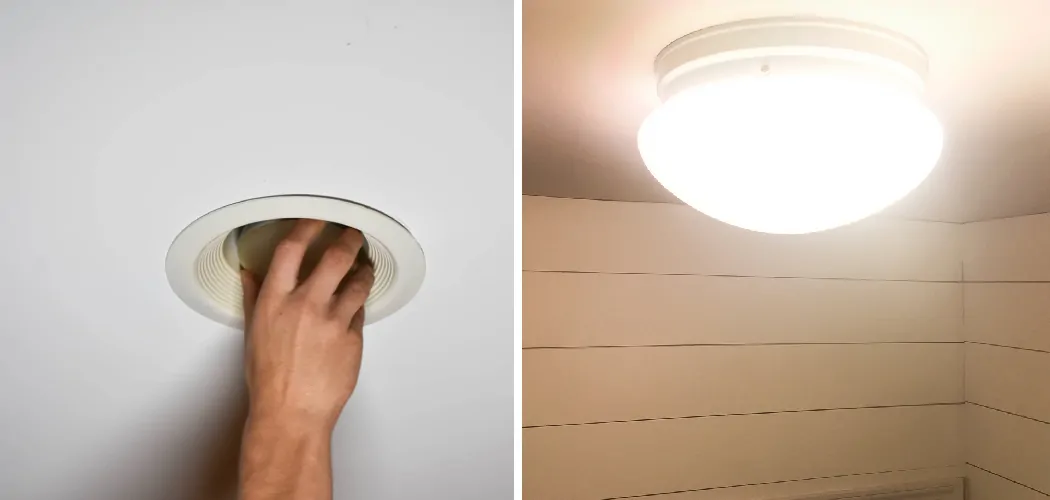Removing a ceiling light housing might be necessary for various reasons, such as replacing a fixture, performing maintenance, or making aesthetic updates to your space.
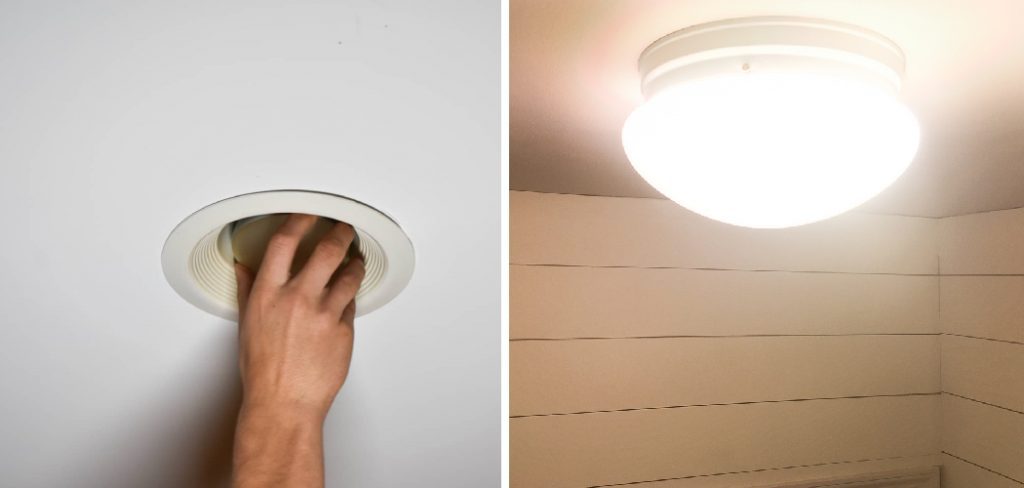
Understanding how to safely and efficiently remove the ceiling light housing is crucial to ensure the task is completed accurately and without any damage. In this guide, we will walk you through step-by-step instructions on how to remove ceiling light housings for different types of fixtures.
Whether you have recessed lighting, a flush mount fixture, or a pendant light, we will cover the essential techniques and precautions to successfully disassemble the housing without causing harm to your ceiling or the electrical components. Stay tuned for a detailed guide that empowers you to confidently handle ceiling light housing removal tasks.
The Reasons for Removing a Ceiling Light Housing
A ceiling light housing or fixture is an important part of any room’s lighting design. It not only provides necessary illumination, but also adds to the overall aesthetic and ambiance of the room. However, there may come a time when you need to remove the ceiling light housing for various reasons.
One of the most common reasons is due to damage or malfunctioning of the current light fixture. In such cases, removing the ceiling light housing is necessary for repair or replacement of the faulty parts.
Another reason for removing a ceiling light housing could be to upgrade the lighting in your room. Maybe you want to switch from a traditional flush mount fixture to a more modern and stylish pendant light. Or maybe you want to install recessed lighting for a sleek and minimalistic look. In such cases, removing the old ceiling light housing is a necessary step in the process.
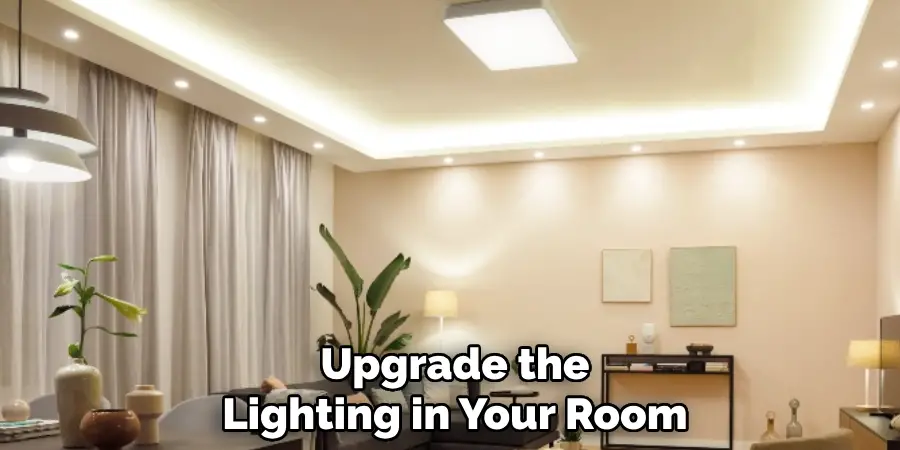
Furthermore, if you are planning to renovate or repaint your room, removing the ceiling light housing may be required for easier access and better results. It allows you to work on the ceiling without any obstructions in the way.
Lastly, some people may simply want to change the overall look and feel of their room. Removing the existing ceiling light housing and replacing it with a new one can make a significant difference in the atmosphere of the room.
10 Methods How to Remove Ceiling Light Housing
1 Turn off the Power
The first step to removing a ceiling light housing is to turn off the power. It is important to make sure that all power to the fixture is turned off before attempting any work. This can be done by switching off the circuit breaker or by unplugging the light from its electrical outlet. Once the power has been turned off, it is safe to begin working on the fixture.
2 Remove Light Bulbs
Once the power has been turned off, you should remove all of the bulbs from the ceiling light housing. This will make it easier to access and remove other components of the fixture. It is important to take note of how many bulbs are in each socket and which type of bulb they are so that you can replace them with new ones later on.
3 Loosen Screws
Most ceiling light housings are held in place by several screws that need to be loosened before they can be removed. It may be necessary to use a screwdriver or Allen wrench in order to loosen these screws, depending on their type and size. Be sure not to overtighten these screws when replacing them after removing the housing, as this could damage the fixture or cause it not to work properly.
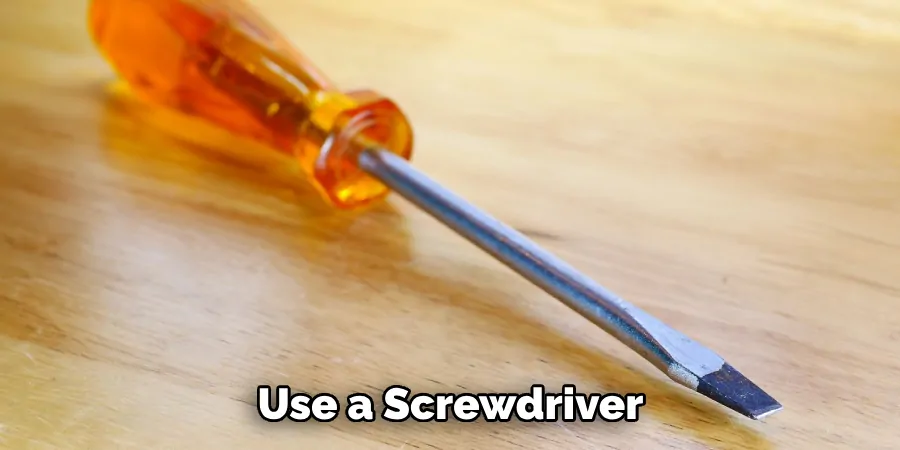
4 Disconnect Wires
Before you can completely remove a ceiling light housing, you must first disconnect any wires connected to it. To do this, carefully unscrew any wire nuts connecting wires from different parts of the fixture and then gently pull them apart from one another until they are completely disconnected from each other and from the ceiling light housing itself.
It is important not to force these connections apart as this could damage them or cause an electrical shock if done improperly.
5 Remove Housing
Once all of the screws have been loosened and all wires have been disconnected, you can now remove your ceiling light housing from its mounting bracket on your ceiling or wall surface. Carefully lift up on one side of the housing until it comes free from its mounting bracket, and then gently lower it down so that it does not become damaged during removal process.
6 Clean Fixture
Before reinstalling your ceiling light housing, it is important that you clean both sides of it thoroughly using a damp cloth or paper towel and some mild soap or detergent solution if needed in order for it not to become dirty again quickly after being reinstalled onto your ceiling or wall surface.
7 Install New Bulbs
Once your ceiling light housing has been cleaned, you can install new bulbs into each socket if needed before reinstalling onto your wall surface or ceiling. Make sure that each bulb matches up with its corresponding socket correctly so as not to cause any damage when turning on your lights after installation.
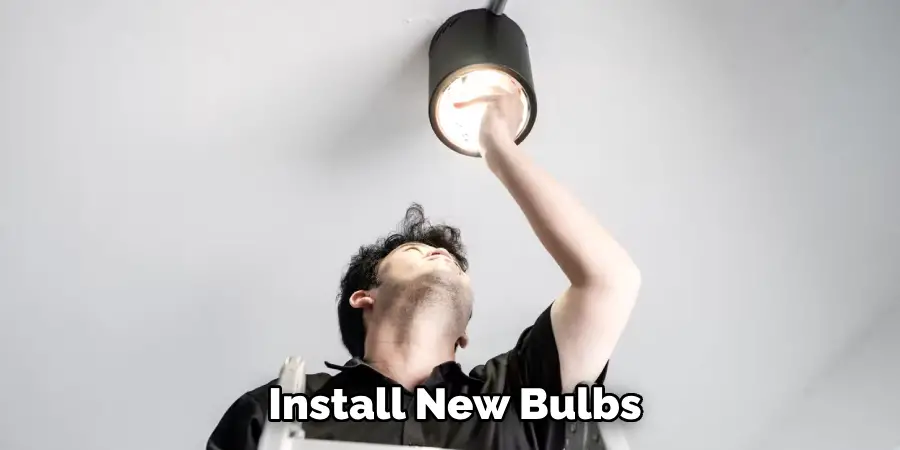
8 Reattach Wires
Once all new bulbs have been installed into their respective sockets, you can reattach any wires that were previously disconnected prior to removing your old ceiling light housing. Take care when doing this so as not to cross-thread any wire nuts onto their corresponding connectors, as this could cause an electrical shock if done incorrectly..
9 Secure Housing With Screws
Now that all wires have been reconnected correctly, you can now secure your newly installed ceiling light housing back into place by tightening down all previously loosened screws using either a screwdriver or Allen wrench depending upon their size and type.. Make sure not to overtighten these screws as this could damage either your fixture itself or its wiring connections within.
10 Turn On Power & Test Fixture
Now that everything has been securely tightened back into place, you can now turn back on power at its source (either at the circuit breaker box or outlet) in order for your newly installed/reinstalled ceiling light fixture’s operation to be tested out prior to finalizing installation process altogether.
Things to Consider When Remove Ceiling Light Housing
When it comes to removing a ceiling light housing, there are a few things that you should consider before starting the process. These considerations will ensure that the task is completed safely and efficiently.
- Safety First: Before attempting to remove any ceiling light housing, make sure that the power source is turned off. This can be done by turning off the circuit breaker or unplugging the light fixture. It is also recommended to wear safety gloves and goggles to protect your hands and eyes from any debris.
- Gather Necessary Tools: Depending on the type of ceiling light housing, you may need specific tools such as a screwdriver, pliers, or wire cutters. Make sure that you have all the necessary tools before starting the removal process.
- Check Ceiling Material: It is important to know what type of material your ceiling is made of before removing the housing. If you have a plaster ceiling, be extra careful when removing the housing as it can easily crack or break.
- Assess Installation Type: Ceiling light housings can be installed in different ways such as recessed, surface mounted, or suspended. Make sure you understand the type of installation before attempting to remove it to avoid damaging the ceiling or light fixture.
Common Mistakes to Avoid When Removing Ceiling Light Housing
Ceiling light fixtures are a common feature in many homes and offices. They come in various shapes, sizes, and designs, but they all serve the same purpose of providing illumination to a room. However, over time, these fixtures may need to be replaced or upgraded. This can involve removing the ceiling light housing, which is the portion that holds the actual light fixture in place.

While removing ceiling light housing may seem like a simple task, there are some common mistakes that people make that can lead to frustration and even damage to the fixture or ceiling. In this guide, we will discuss these mistakes and how you can avoid them. Additionally, we will provide some tips and tricks to make the process smoother and more efficient.
Conclusion
While removing a ceiling light housing may take some time and effort, it can be done successfully with just the right tools and steps. With patience, dedication, and knowledge you can rest assured that the job will be done efficiently and effectively. Take the time to look at all of your options before making a decision on which is best for you. Don’t forget to follow each step carefully so you avoid any mishaps or unexpected damages.
Above all else, use safe practices when operating power tools and keep safety in mind throughout the entire process. Taking these steps into consideration will make sure your ceiling light housing is removed safely and quickly. There is no better feeling than being able to complete a task like this with confidence and satisfaction – so don’t hesitate to research how to remove ceiling light housing today!

